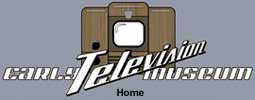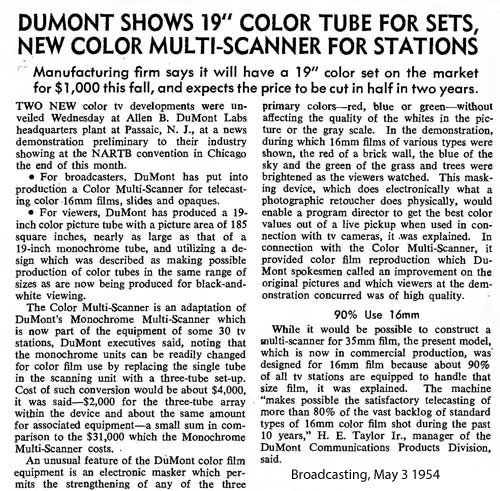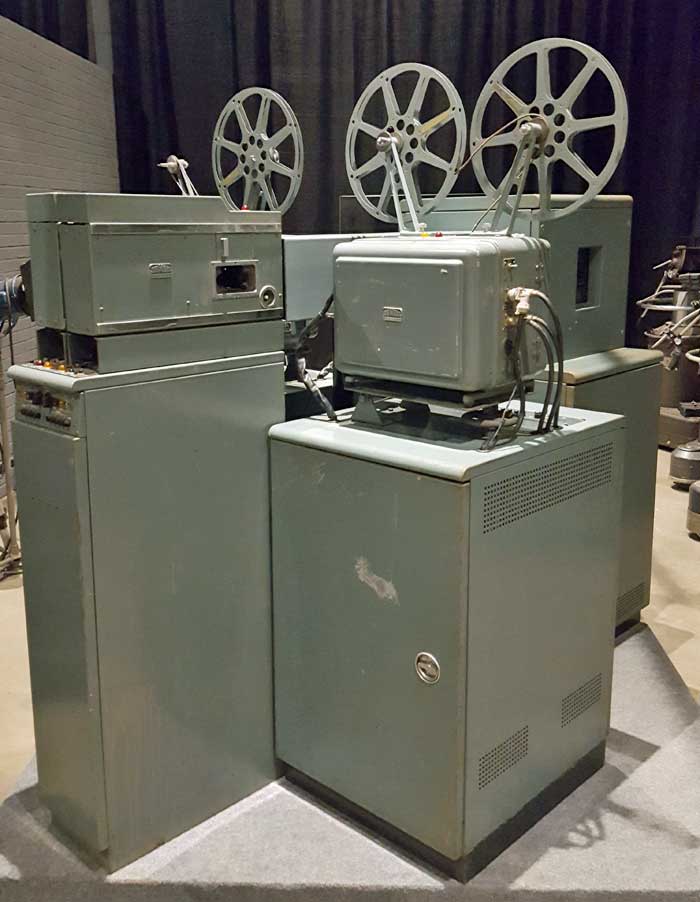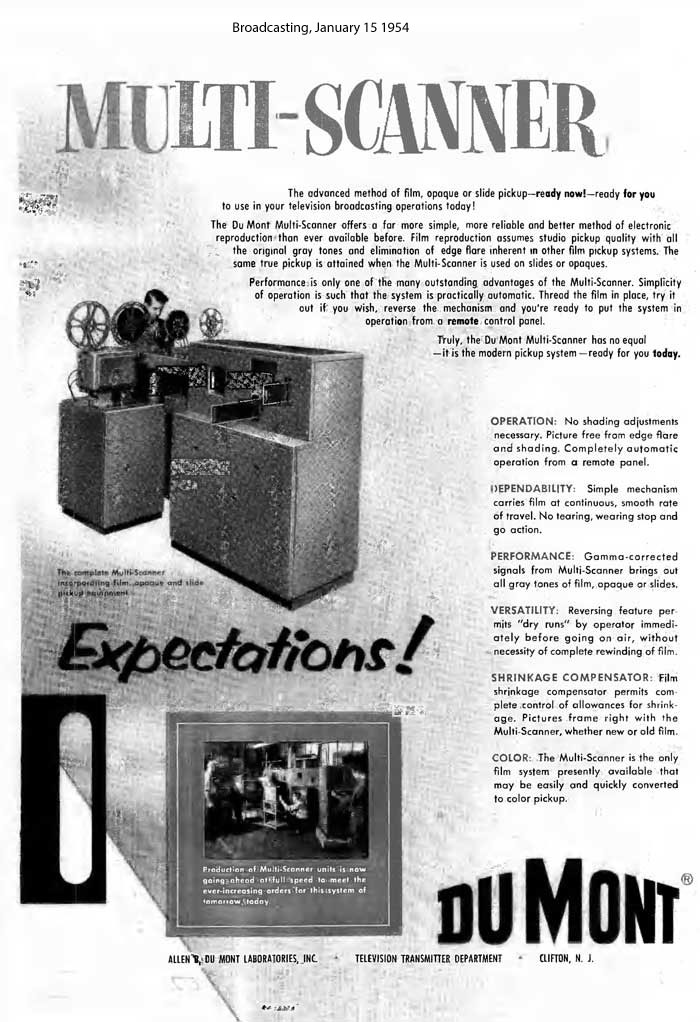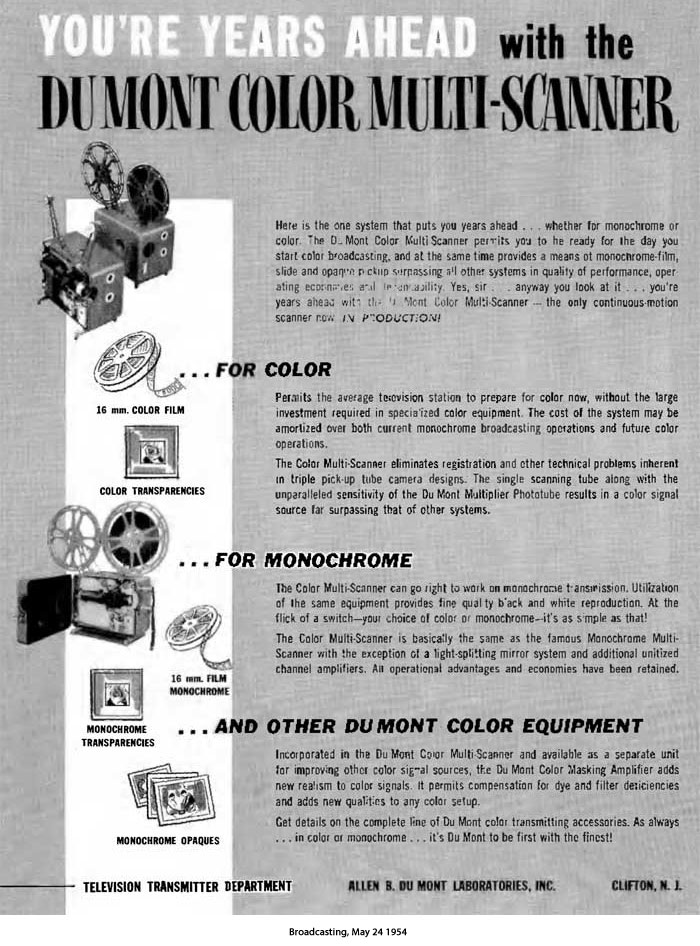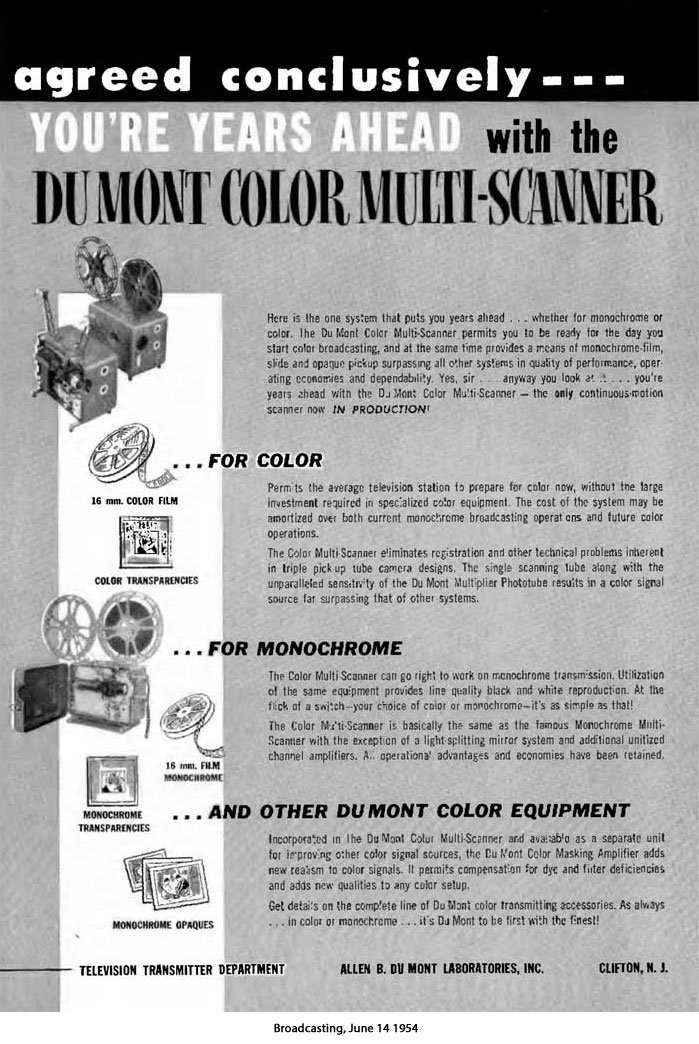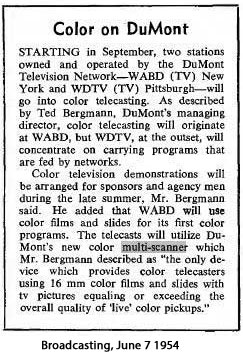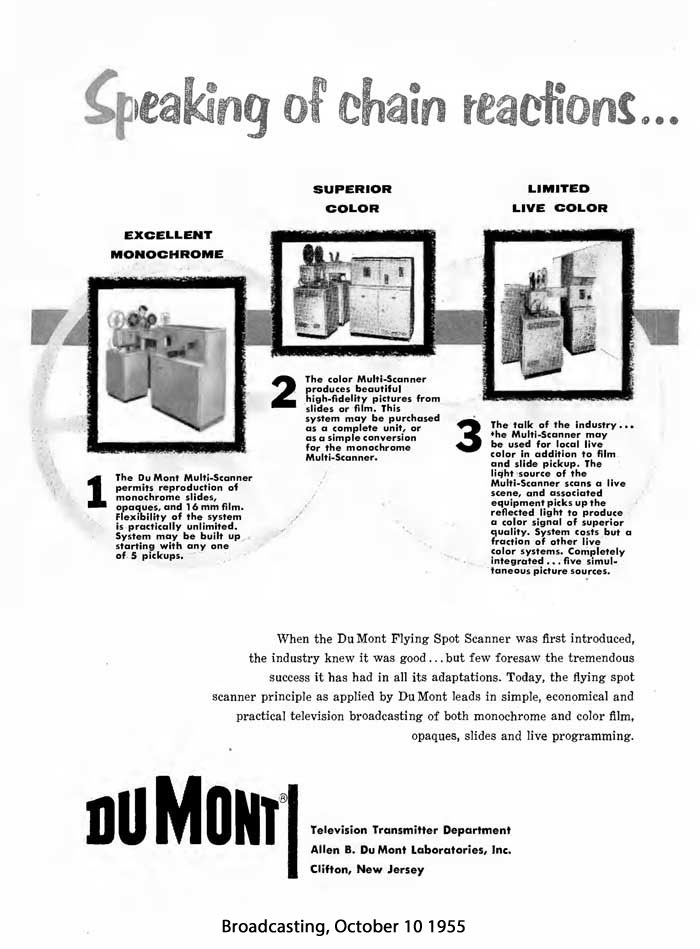Early Color Television
DuMont Color MultiscannerThe Multiscanner was introduced in 1954 to allow TV stations to broadcast in color without buying expensive live color cameras or film chains. It used the flying spot scanner method, and worked with 16mm film and slides. In 1955 it was apparently modified to allow it to do limited live telecasting by using external photocells. Shortly after that the Vitascan was introduced, which allowed more elaborate live telecasting in a studio.
At the Texas Museum of Broadcast and Communications
|
